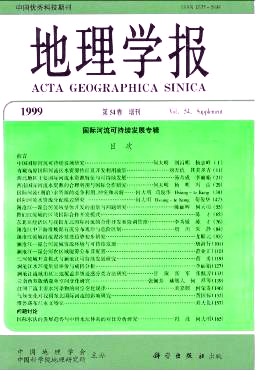Shi Yafeng, Li Jijun, Li Bingyuan, Yao Tandong, Wang Suming, Li Shijie, Cui Zhijiu, Wang Fubao, Pan Baotian, Fang Xiaomin, Zhang Qingsong
Pressed by the northward movement of the Indian Plate, The crust in the Qinghai Xizang (Tibetan) area was uplifted during the Late Cenozoic, which exerts a great influence on East Asian environment. The Qinghai Xizang area was subject to two cycles of uplift and plantation in the Tertiary. The Plateau had raised up to about 2 000 m above sea level during 25 Ma BP~17 Ma BP. This, coupled with favorable continent ocean configuration at that time, may have triggered Asia monsoon, which replaced previously dominated planetary wind system and led to a big environmental shift in China in the Middle-Tertiary because of global cooling and plantation in Xizang. Monsoon decreasing resulted in intensification of the Asian dry climate after 8 Ma BP. The rapid uplift of the Qinghai Xizang Plateau in the Last 3 4 Ma had enhanced in a great deal again the summer monsoon, leading to moistening of the northern Plateau and even North China. On the other hand, the intensification of winter monsoon resulted in deposition of Loess at 2 5 Ma BP in North China. The subsequent tectonic movement of Mid-Pleistocene (0 8 Ma BP~0 5 Ma BP) might raise the Plateau up to about 3 000 m~3 500 m above sea level. This coupled with temperature drop by periodicity shift in the earth orbit, and led the Plateau to enter the iceosphere and form the maximum glaciating with ice cover of over 500 000 km2. Because of strengthen of winter monsoon, desert in the northwest China was enlarged and Loess sediment expanded far to the lower reaches of the Yangtze River. Intense tectonic uplift happening in the last 150 ka, led to significant change of many local drainage system in the plateau. Based on 150 ka high resolution climatic records from the Guliya ice core, lake cores at Tianshuihai and Zoige, and loess profile at Linxia, it is found that the climate in MIS 5e was especially warm. The ice core record indicated temperature at 125 ka BP was 5℃ higher than that of today and climate was unstable in MIS 5e in the plateau, which was revealed also by loess and lake core records. The deglaciation since 15 ka BP was characterized by a clear identification of the Younger Dry as event at ac.. 12 ka BP followed by largely fluctuation rising of temperature with its warmest peak at 7 ka BP, corresponded with increase of precipitation, expansion of lakes. After 5 ka BP, temperature decreased again in fluctuation, accompanied with environmental deterioration. Repeated leveling indicates that the Plateau is still in rapid rising at an average rate of 5 8 mm/a in present time.
